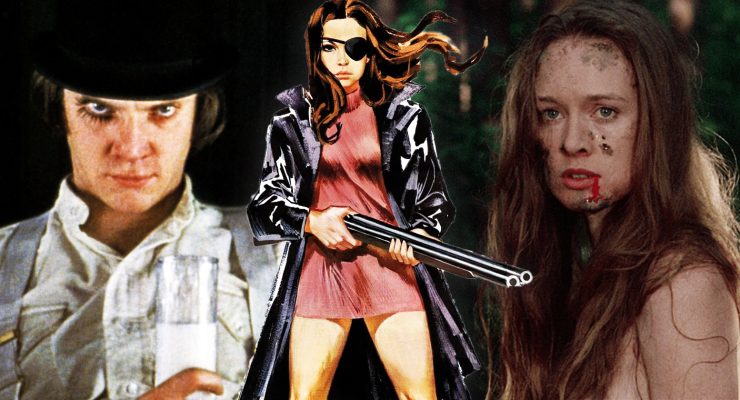Luke Owen on X-Men: Apocalypse…
It’s a common complaint from comic book fans whenever the first images of their favourite characters from a new movie are released: “they don’t look like the comics”.
Even going back as far as Bryan Singer’s X-Men, there were those in the comic book community who bemoaned the fact Wolverine was not in the classic yellow suit, or that Cyclops wasn’t clad in blue, or Storm wasn’t in white. Daredevil’s suit looks like it’s left over from a bondage party, Thor isn’t wearing his trademark helmet, Superman is missing his red panties. The list goes on.
But what people seem to forget is that these are movie adaptations and interpretations of comic books, not literal translations. And, as such, things are going to change.
The most recent example of this is Oscar Isaac’s Apocalypse from Bryan Singer’s upcoming entry in the long-running X-Men franchise, X-Men: Apocalypse. Within moments of the images being officially released yesterday, thousands of Facebook and Twitter timelines were filled with comic book fans complaining that he looked “nothing like the comic” or noting about “that awkward moment when cosplayers do a better Apocalypse than a Hollywood movie”. But these Negative Nancys are missing the point: Bryan Singer wasn’t re-creating the comic’s Apocalypse for his movie, he was creating his version of Apocalypse for his X-Men world.
Comic book movies work best when filmmakers use the comic book as a blueprint, not a guideline. Christopher Nolan’s Dark Knight Trilogy is a classic example of a director taking the characters and themes of the Batman world and building around them. His version of Bane was a total 180 from the comic book iteration, as was his Joker. Shane Black updated the culturally-dated Mandarin and turned him into a modern-day terrorist, and created one of the more memorable moments of the Marvel Cinematic Universe when it was revealed to be a joke (spoilers). Like any good writer, they took what was in front of them and put their own unique spin on it.
Singer has done the same thing previously. X-Men: Days of Future Past was not a literal translation of the 1981 two-part comic book run, but a version of those events told within the X-Men universe he’d created. So, in his world, sending back Kitty Pryde wouldn’t work because she couldn’t survive the trip and there was no younger body for her to ‘leap’ into in the 1980s – so they had to send back Wolverine. That made sense in Bryan Singer’s X-Men world. Was it the same as the Chris Claremont and John Byrne comic? No. But as long as it made sense within that movie’s world, it didn’t matter.
Though sadly never produced, Superman Lives was going to be a completely different look and feel for the Last Son of Krypton. The movie was going to be loosely based on The Death of Superman, but only taking the core aspect of the story: Superman dying and being reborn with a mullet. Burton’s vision for Superman was not the same as Richard Donner’s, and that would have created either the best Superman movie ever made, or the best-worst Superman movie ever made depending on your point of view. People may say that Nic Cage looks silly in the Superman suit (which he doesn’t), but it at least would have been a different take on the character, rather just being Superman Returns (ironically directed by Bryan Singer) and repeating what had been done before.
The upcoming Captain America: Civil War will not be a literal adaptation of the Mark Millar story either, because those events don’t make sense in the Marvel Cinematic Universe they’ve spent the last decade building. Prior to the Sony/Marvel deal to allow Spider-Man to play with his Avengers pals, there were those who felt you “couldn’t do Civil War justice” without him. That’s not that case at all. Secret identities are a non-issue in the world of the MCU, so instead the movie can build on the comic’s central theme: Captain America versus Iron Man. Their version of the story would have been the same, with or without the friendly neighbourhood wall-crawler. Captain America: Civil War doesn’t need to follow the comic to the letter; it just needs to tell a story that makes sense in their world.
Where people really expecting Apocalypse to look like he does in the comics? With his big blue suit and belt buckle with the giant ‘A’ on it? Those thick blue lines around his mouth and face? C’mon. For as cool as it looks on the page (and it does), it’s a look that doesn’t fit the world Bryan Singer has created for the last 15 years. Comic book fans need to learn that movie versions of their beloved comics aren’t always going to look, feel or sound the same – and this is true of all adaptations. Spielberg’s Jurassic Park bears little resemblance to the book on which it’s based, and is instead the director’s take on that story. The Resident Evil series is wildly different to the video games, but this was Paul W.S. Anderson’s version on Capcom’s iconic franchise (for better or worse). If anything, remakes and reboots should take a similar tact. The best thing Paul Feig’s Ghostbusters could have done was remove itself as far away from the 1984 comedy classic and just be its own thing. So, does it matter that Oscar Isaac looks nothing like the comic book version of Apocalypse you know and love? Not at all. This is just a different version and interpretation of the character. A new take, something different.
However it is problematic that he looks like Ivan Ooze from Mighty Morphin’ Power Rangers: The Movie, but that’s another argument.
Luke Owen is the Deputy Editor of Flickering Myth and the host of the Flickering Myth Podcast. You can follow him on Twitter @LukeWritesStuff.











